Street artist Blek Le Rat (Xavier Prou; Paris, 1951) is one of the pioneers of international street art and the father and initiator of stencil graffiti, the same technique that would be used and made famous by Banksy, who can be considered an epigone of the French artist. His career began in 1981, when he began painting on the streets of Paris after being fascinated by the graffiti he met in New York on a trip in the 1970s. Blek Le Rat is thus about to turn 40 years old: we caught up with him for an interview about his art and his latest works. The interview is curated by Federico Giannini, editor in chief of Finestre Sull’Arte.
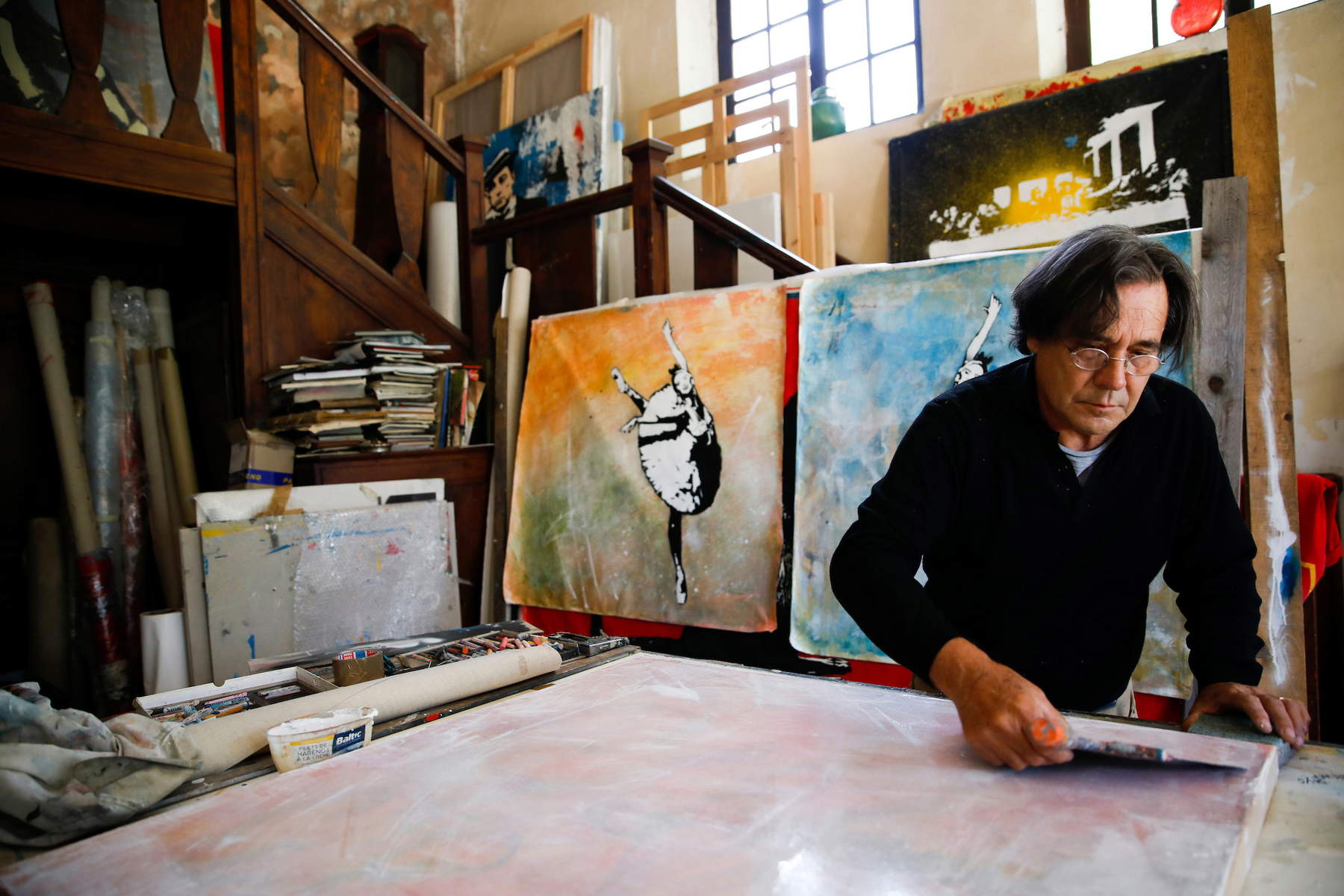 |
| Blek Le Rat (real name Xavier Prou) at work in his studio in Guérard La Celle (France), September 23, 2019. Ph. Credit Jasmin Shah. |
FG. To begin with, I would like to talk about your latest work, M.U.R. (Mobulable, Urbain et Réactif), made in Rennes in September 2019. Can you tell us about this work, how it was made, how the idea came about?
BLR. I am not used to working on modular walls: it was the first time I intervened in this mode. I had been invited by Patrick Daniello, president of the association Le mur de Rennes, and it seemed to me a beautiful thing, also because under these conditions, that is, when you work on an “authorized” wall, you do not work in urgency, and with the fear of being arrested by the police. Therefore, one can continue to think about the image while working, one can build in multiple times because mishaps do not arise due to the extreme urgency of having to quickly finish an image made illegally. Regarding this modular work in Rennes, a friend, Thierry Gauthé, known as Bergu, had arrived in the morning to see me paint. The fortuitousness of this encounter led us to agree that it would be wonderful if Thierry intervened on the image as he did on my stencils in the 1980s, adding his famous bats. It was a magical moment, I really enjoyed this work in Rennes, and looking back at the image today I still cannot help but see in it a relation to the Covid-19 epidemic.
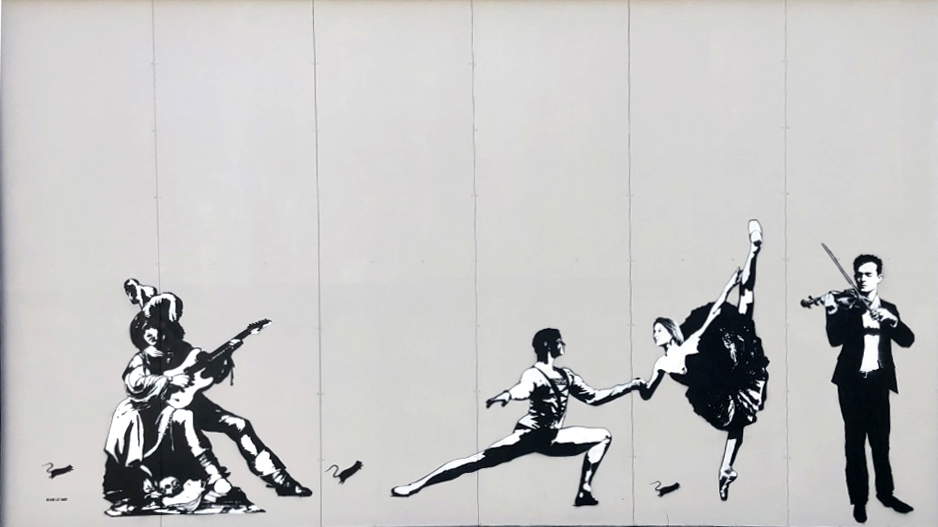 |
| Blek Le Rat, M.U.R. (Mobulable, Urbain et Réactif) (2019; Rennes) |
There are also relationships to ancient art in the work: references often found in your art. For example, She revisited Leonardo da Vinci’sLast Supper (and also exhibited it in her last solo exhibition in Italy, which took place in 2016 in Milan at Wunderkammern Gallery). Anyway, there are many classical works that You have revisited: Michelangelo’s David, Venus de Milo, Manet’s Piper. What is your relationship with classical art? In your opinion, what kind of relationship should be established between a street artist and art history?
I have always considered myself a social achievement. That is to say, I am the result of what I have seen, understood, studied throughout my life. I studied art history at the �?cole des Beaux Arts in Paris. I had the opportunity to grow up in a family that approved of the interest in everything connected with art, with music, with literature, with theater, with architecture. My father had completed studies in architecture, my grandfather, in the 1920s and 1930s, was a decorator and worked on the ocean liner Normandie and the Orient Express. When I was a child, in the 1950s and 1960s, we often came on vacation to Italy because my father loved your country, for its artistic treasures. We would visit museums, take long walks in the cities. I remember long walks in the heat in Venice, in Florence, in Rome, in Naples. In addition, my whole family was constantly visiting museums in France. During my childhood I would go at least once a year to the Louvre or the Musée d’Art Moderne in Paris. Going to museums was normal. I was therefore impregnated with painting without even really realizing it. And even in my house there were paintings everywhere, because everyone in my family (my two uncles, my aunt, my paternal grandfather) painted, you could smell turpentine everywhere. However, there is also to be said that knowledge of art history could also be a hindrance, because the weight exerted by the great geniuses of painting is too heavy for a young artist in his beginnings. One must appropriate art history and then get rid of it later.
I would like to talk about your exhibition in Milan in 2016. The title of the exhibition was Propaganda. A very political title in a broad sense. Would you call your art “political”?
No, my art is not really political: rather, it is social work. I do work on the society of my time in cities. For example, I have been working on that great worldwide social problem of homelessness and beggars. But I don’t have any political messages to convey. I have never been part of any political movement, although of course I have political preferences: and anyway, having reached a certain age now, I don’t really believe in it anymore. As for the exhibition, I had titled it Propaganda remembering a trip I took with my parents that determined a part of my life. A trip to Italy in the early 1960s: on some walls in Padua I had found traces of stencils dating back to World War II and still visible. They depicted a portrait of Mussolini in profile, wearing a helmet. My father had explained to me that Mussolini was also doing his propaganda throughout Italy by having his image painted on the walls with stencils. That is why I had decided to name the exhibition in this way, precisely because of the relationship of this memory related to my father.
 |
| Blek Le Rat, La Cène de Leonardo (2006) |
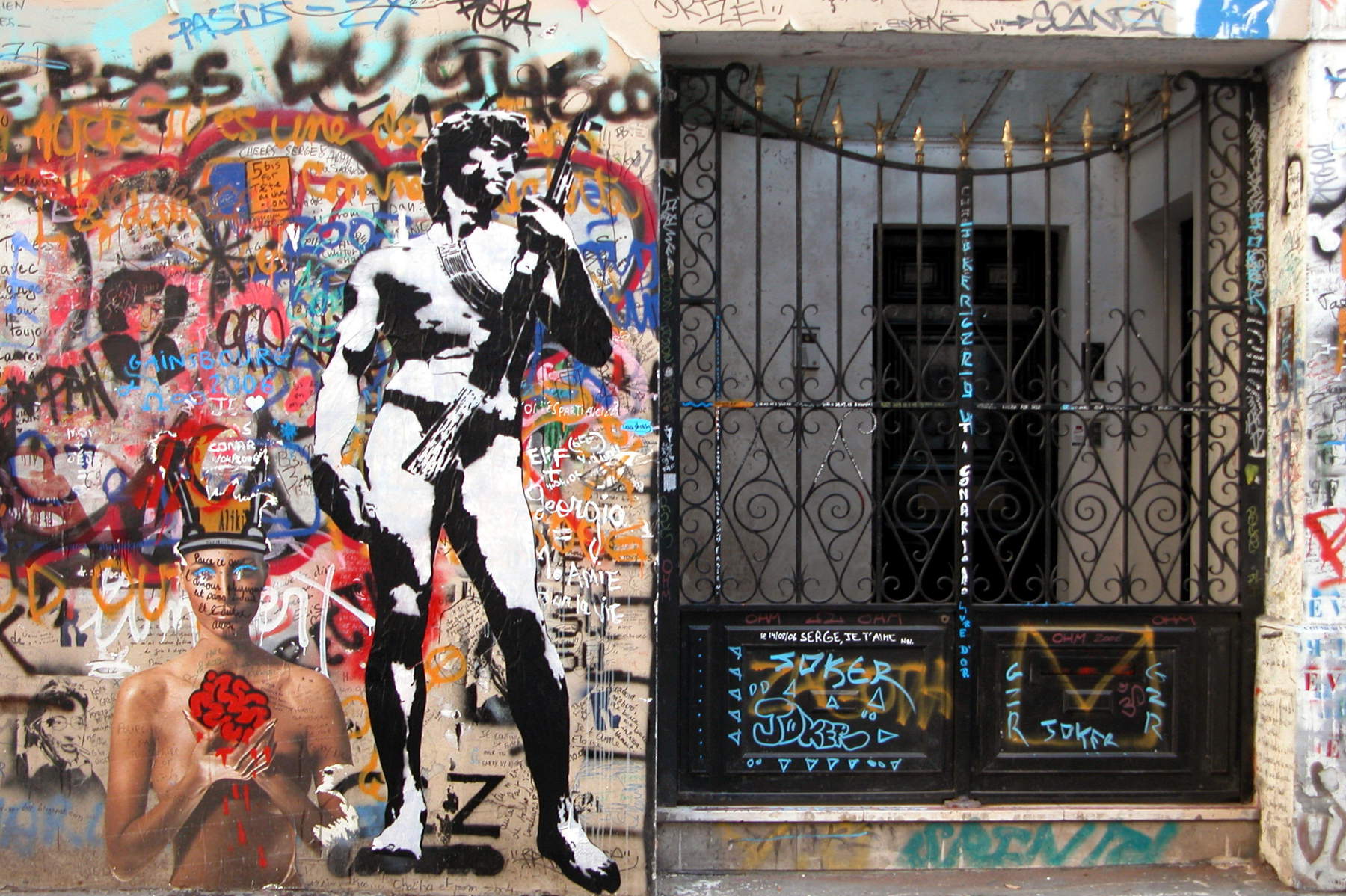 |
| Blek Le Rat, David (2000s; Paris) |
 |
| Blek Le Rat, Manet’s Piper (2000s; Houston) |
Indeed, despite the fact that His first Italian exhibition came only in 2016, we know that His relationship with Italy is very strong, and His very stage name, Blek Le Rat, has a connection with our country. But what is your relationship with Italy? What do you love about our country? And what works have you made here?
Yes, Blek Macigno, the great Blek! I was fascinated by that comic strip when I was 11 or 12 years old. For me, Italy is the cradle of art, all along its history. The painters, sculptors and architects, from ancient Rome onward, still influence us so much today. In 1987 I stayed for some time at the Institut Français in Naples: I loved that city, and I also clandestinely made some graffiti on its walls. There remain beautiful photographs of my graffiti taken by Libero De Cunzo. The walls of Naples are magnificent, perhaps they are the most beautiful walls in the world. Then, in 1998, I went back there with my family to hang some posters in the city, and finally, in 2005, I stayed for some time in Florence, at the invitation of Tarek Hassanien.
What is your opinion of the street art movement in Italy? In your opinion, are there artists who can stand out on the international scene?
Of course, there are Italian artists that I find brilliant: Blu, Bo and Microbo are fantastic, then I would mention Sten and Lex, they are all artists that I like and have a really personal style.
Let’s stay in Italy: four years ago, Blu himself had erased his works in Bologna, in a protest action against the company that manages some important museums in the city, because it was planning to organize a big street art exhibition for which some of the works on the walls of the city would be ripped off the walls and placed in a museum. Blue wanted to protest the company because it had taken collective works out of public space, but those defending the exhibition said it was an attempt to “musealize” ephemeral art, and they blamed the artist for erasing a work that the public could have continued to admire. What do you think about these attempts to musealize street art? Should street art be preserved?
Yes, I had been following the story. As for me, I would be quite happy if a museum decided to acquire any of my graffiti in situ. I love objects, and I think this could be a nice object. Inevitably, however, the meaning of the illegally painted graffiti would be distorted within the museum, because it would go out of its original context. But the graffiti of the 1960s and 1970s is gone, and we are left with nothing from that era, from the first steps of this form of expression.Perhaps if museums had had the foresight to save it, we would have the traces of those first steps today.
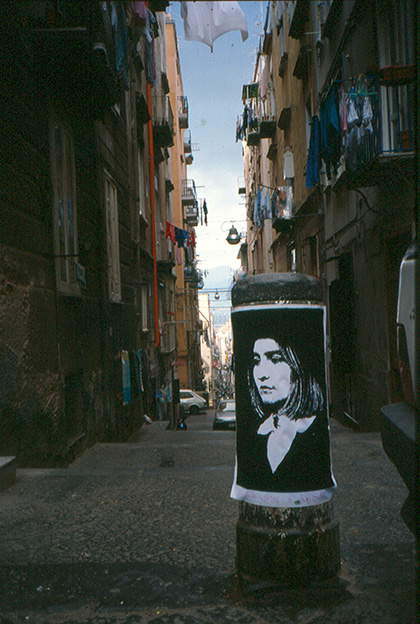 |
| Blek Le Rat, Sibyl (1998; Naples) |
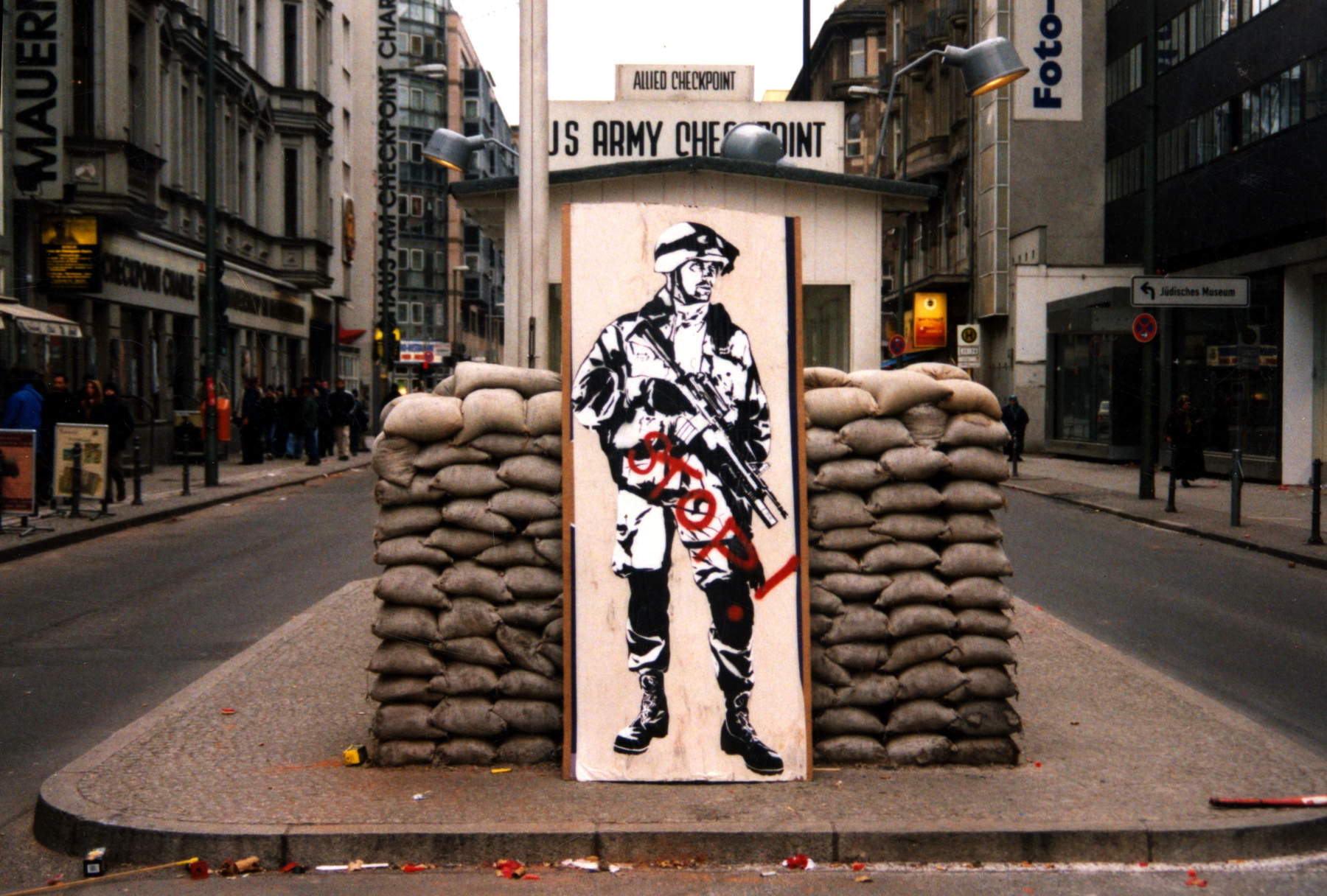 |
| Blek Le Rat’s intervention at Checkpoint Charlie, Berlin (2000s). |
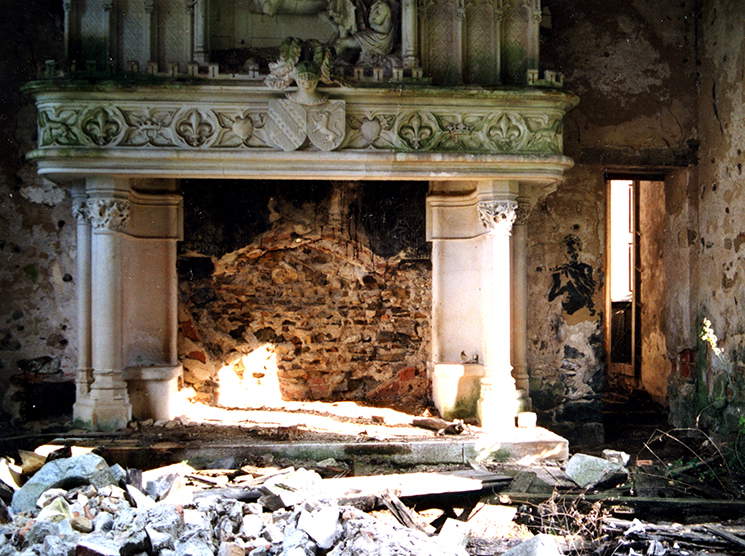 |
| Blek Le Rat’s intervention at Bagnac Castle (1992). |
What are your thoughts on French street art? Some of the world’s greatest street artists are French: Mr. Brainwash, Invader, JR, Speedy Graphito, C215. What is it that makes the French street art scene so dynamic?
The French scene has been extremely dynamic for so long because French street art is a very strong social phenomenon that influences artists in other countries. I have seen three generations of artists succeed each other since 1981, I have seen changes in mentality in the world of street art. In the 1980s it was a kind of rebellion. Today, however, street art is recognized as an art form, it has a market value, the context has changed a lot.
And speaking of market, after the United States, France is the country with the most street artists in Artmarket.com’s ranking of street artists with the best auction sales. In this ranking, France has seven artists, Italy has zero...
Actually, I don’t follow these rankings that list on artists based on auction sales. I don’t know why Italy is ranked that way. Maybe because Italian artists are not supported by Italian galleries.
Changing the subject: You are one of the best street artists in the world, and a pioneer of the stencil. Why did you choose this technique?
Thank you for the compliment in the meantime. I chose this technique because I did not want to imitate New York graffiti, since I was born in Paris and come from another culture, and although I love American culture I did not want to imitate it. I harbored a desire to have my own style, and I wanted the images I made to integrate with the environment and architecture of European cities. The wall, the place, the architecture around the image or the stencil are very important. The support of the image plays an essential role in my work. The color, the texture, the inclusion in the environment also play a really significant role in choosing the wall I like to work on. Sometimes the proximity of an unusual element to one of my images can completely change the meaning. These are all characteristics that make street art a very subtle art. The stencil technique is then very effective; you can multiply the image hundreds of times in hundreds of different places. It is a perfect medium to promote yourself and make yourself known. It takes a few minutes to imprint a stencil in the street, a few seconds to paint a mouse, for example. You have to work fast in the streets, because the police are also fast.
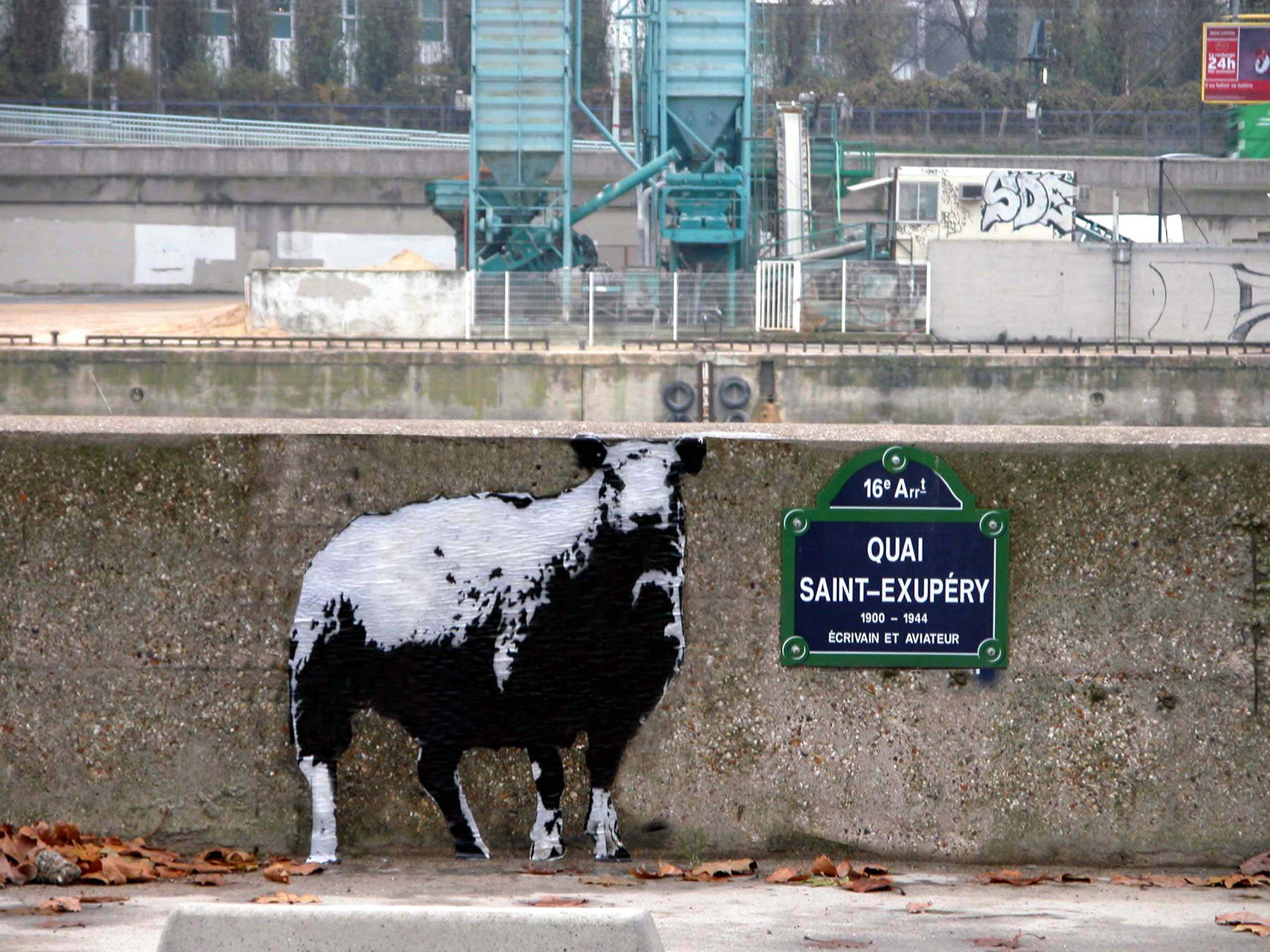 |
| Blek Le Rat, Sheep (2000s; Paris, Quai Saint-Exupéry) |
 |
| Blek Le Rat, Tango (1980s) |
 |
| Blek Le Rat, Rats (1980s) |
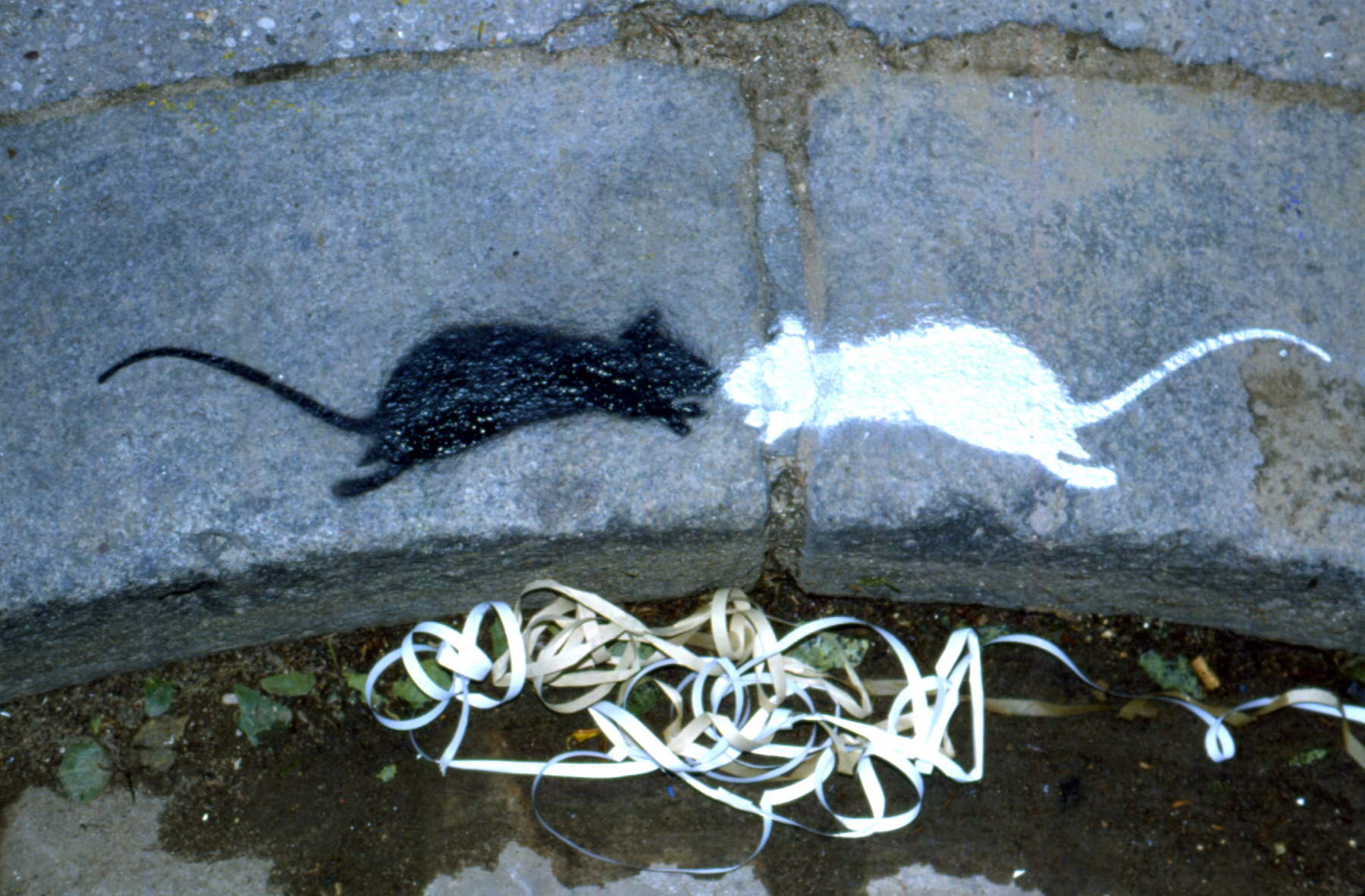 |
| Blek Le Rat, Rats (1980s) |
When people talk about stencils, they often think of Banksy. What is your relationship with Banksy today?
I have no relationship with him. I was told that I met him in London in the 2000s, when I had done an exhibition at the Leonardo Street Gallery, in 2006, but frankly I don’t remember. Anyway, I think he is very funny and his work is well synchronized with our time.
Today street art has become very popular and is one of the most appreciated art forms. For many critics (and also for many art historians), it is a more direct art form than others, and very inclusive. In your opinion, what is it that makes a street artist great? If a young street artist asked you for advice, what would you tell him or her?
That his style should suit him. He should not try to copy other artists. He should have his own personality. Louis Ferdinand Celine said, “The streets are full of ideas, but one style is rare: there are two or three per generation, and there are thousands of artists who repeat what others have painted. Death is the true inspirer, and if you do not put your skin on the painting, you have nothing. You have to pay.”
One final question. In your works, the rat is found everywhere. But what does this animal mean to you?
RAT=ART!
Warning: the translation into English of the original Italian article was created using automatic tools. We undertake to review all articles, but we do not guarantee the total absence of inaccuracies in the translation due to the program. You can find the original by clicking on the ITA button. If you find any mistake,please contact us.